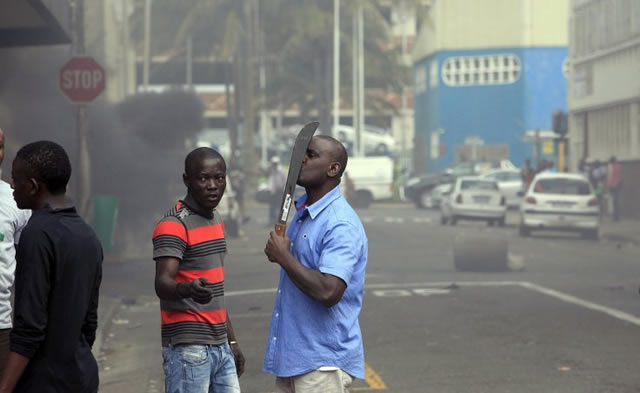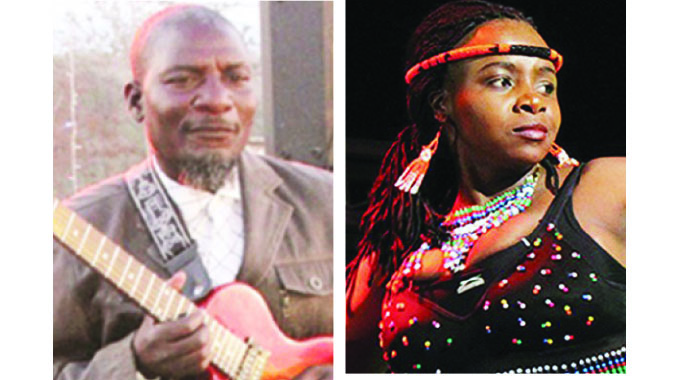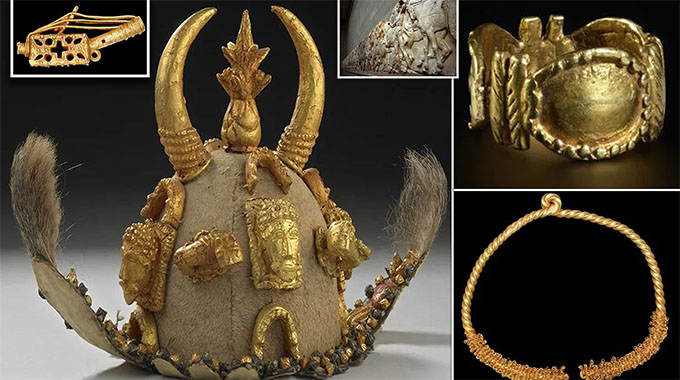Zimbabwean writing in English: 35 years on
Beaven Tapureta Bookshelf
Last Saturday, April 18, as Zimbabweans we celebrated 35 years of independence and for writers the moment serves well to reflect on the journey so far travelled. It is a time to celebrate our living and fallen literary heroes. No doubt we should boast of a colossal archive of Zimbabwean literature in the three mostly used languages (English, Shona and Ndebele). There is a vast wealth of local literature to read now than there was before independence when Zim literature was launched in1956.
I have chosen to reflect on Zimbabwean writing in English. The black Zimbabwean writing in English has taken various different dimensions, beginning with an experimental trickle and then bursting the flood gates, becoming more and more dominant as from the 50’s.
The early works tended to be historicised fiction. This is fitting if one realises that this kind of fiction was done, in most cases, by writers who quickly became prominent in the Black Nationalist movements from as early as the 1950’s.
There is the example of Stanlake Samkange’s “On Trial For my Country” (1966) which dwells so much on settler presence and the loss of authority and dignity of black people. This novel-cum-history is centred around Rhodes and Lobengula and their conflicts. Samkange’s other book “Year of the Uprising” (1978) shows how the African spirit mediums resisted colonialism. Solomon Mutsvairo’s “Mapondera: Soldier of Zimbabwe” (1978) is in that mould depicting the general resistance of colonial rule by Shona people. Ndabaningi Sithole also wrote against colonialism with, among other books, “The Polygamist” (1972), a story that depicts how an African family is disrupted by Christianity.
In the 1970’s, Zimbabwean writing in English became more acute and more fictionalized, taking a more subtle inclusion of history. Charles Mungoshi’s “Coming of The Dry Season” (1972) uses very fine forms of understatement to portray how the black people attempt to chart a path in a system very hostile.
His novel “Waiting for The Rain” (1975), now considered one of the most outstanding works of fiction to come out of Zimbabwe, demonstrates how the African family chokes under the influence of the confusing colonial education, the exploitation and marginalisation of black people from fertile lands.
It is a text that has echoes elsewhere in Africa especially in the way in which it portrays the machinations of mental conquest. In that regard Mungoshi is joined by Dambudzo Marechera with his “House of Hunger” (1978) and “Black Sunlight” (1980). Marechera’s work explores how the colonial system in its climax in the 1970’s brutalises a whole generation of black youths, driving it variably into exile, war and sheer madness.
The period of the war of liberation immediately gave birth to an upsurge of war literature where, in some cases, the writer had been an active participant at the war front.
The most outstanding examples are Alexander Kanengoni, Thomas Bvuma and Freedom Nyamubaya. War literature appeared soon after independence with poems, plays and novels which tended to depict the exploits and heroics of the 1970’s war of liberation fighters.
A good example is Edmund Chipamaunga’s series of novels, especially ‘A fighter For Freedom’ (1983). There is also Garikai Mutasa’s “Contact” (1985) and Tizora’s “Crossroads” (1985).
Much later, these war novels became more analytical, exploring betrayals and counter betrayals inside and out of the liberation movements during and after the war.
Good examples are Kanengoni’s “Echoing Silences” (1997), Charles Samupindi’s “Pawns” (1992) and Freedom Nyamubaya’s poetry collection called “On The Road Again”.
“Harvest of Thorns” by Shimmer Chinodya is arguably the most exciting book on the war of liberation by a non-combatant. From the Rhodesian front came novels like Angus Shaw’s “Kandaya: Another Place, Another Time” (1993) and Bruce Moore King’s “White Man Black War” (1988).
But others feel that after Zimbabwe’s independence in 1980, the literary stage in English belonged to Chenjerai Hove, Yvonne Vera and Shimmer Chinodya.
Chenjerai Hove’s novel “Bones won the prestigious NOMA Award for Publishing in Africa in 1989.
Hove later wrote “Shadows” (1991) and ‘Ancestors’ (1996). Hove writes about the powerless society – women, children and the poor.
Shimmer Chinodya has been very outstanding in the post independent Zimbabwe, publishing a book every year for the past seven years. His “Chairman of Fools” (2005) and ‘Strife’ (2006) have moved the Zimbabwean novel further in the ways in which they explore individual turmoil from inside of the nucleus family.
The late Yvonne Vera is probably the most successful woman in Zimbabwean literature to this day in terms of output and sheer intense experimentation with prose. Her prose texts are a collection of short stories called “Why Don’t You Carve Other Animals” (1992) and her novels are “Nehanda” (1993), “Without A Name” (1994), “Under the Tongue” (1996), “Butterfly Burning” (2000), and “The Stone Virgins” (2002).
In “The Stone Virgins” as in her other works, Vera’s highly imaginative power is expressed in the rhythmic poetry in her voice and language. Yvonne Vera won the 1997 Common wealth Writers Prize (Africa Region, Best Book) for “Under the Tongue”. In 2004 she won the PEN Tucholsky Prize “for a corpus of work dealing with taboo subjects”.
Women’s literary work in Zimbabwe has also been spurred on by Tsitsi Dangarebga with her novel “Nervous Conditions” (1988) which won the 1989 Commonwealth Writers Prize (Africa Region). Virginia Phiri is also emerging as a specialist novelist on taboo subjects.
Her book “Destiny” (2006) is about the challenges faced by a girl who is born a hermaphrodite. Phiri’s other novels are “Desperate” and “Highway Queen”. Worth mentioning too at this point is the Zimbabwe Women Writers, an organisation that has been very outstanding in encouraging women across Zimbabwe to break into print. They have won at least a literary prize every year for the past six years. Their “A Tragedy of Lives” (2003) chronicles the lives of women who have been to prison.
There has been a fierce upsurge of short story writing in Zimbabwe at the turn of the century. Most of them bring together writers from various Zimbabwean backgrounds.
There is “A Roof to Repair” (1999), “No More Plastic Balls” (2000), “Writing Still” (2003), “Writing Now” (2005), “Short Writings from Bulawayo” (books One to Two), “Creatures Great and Small” (2006) and “Light a Candle” (2006).
In the field of poetry, Musaemura Zimunya and Chenjerai Hove are Zimbabwe’s two most widely read and anthologized poets writing in English. Beginning in the late 1960’s, Zimunya’s voice has explored the disillusionment of the conquered, the excitement of growing up in a beautiful environment, the struggle between tradition and westernisation and the feelings of betrayal at independence.
His major books are “Thought Tracks” (1982), “Kingfisher”, “Jikinya and Other Poems” (1982), “Country Dawns and City Lights” (1985) and “Perfect Poise”. Chenjerai Hove writes about the struggle for Independence and the betrayal of it after 1980 from “Up in Arms” (1982) to “Red Hills of Home” (1985), “Rainbow in The Dust” (1998) and “Blind Moon” (2003).
There is a new generation of writers, local based and others writing in the diaspora, which is growing, exploring new writing styles using English language.
It is worth it to say our literature has grown, despite the ups and downs.






Comments